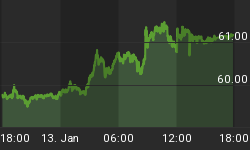Well, surprise surprise: Initial Claims seems to have leveled off, somewhere in the 575k area, which is decidedly un-green-shootsish.
This does not come as a complete surprise to us, of course, since a couple of weeks ago we noted that Claims and Payrolls were roughly where we would have expected them to be based on the pre-Lehman trends. And, lo, there they are.
Of course, there are always wiggles in the trend, and with cash-for-clunkers helping to rev up manufacturing (however briefly) it would be foolhardy to say that Payrolls won't improve for a month or two. But I suspect the sustainable run rate of Payrolls right now is between -250k to -300k, absent a real improvement in the economy.
Continuing job loss, of course, will tend to push up the Unemployment Rate, but this is a tougher question. What effect did the Lehman bankruptcy and the related panic have on the Unemployment Rate? The chart below shows why we might suspect the 'Rate is a bit ahead of itself. For the last 20 years, the connection between the Unemployment Rate and what people said about how tough the job market is has been very tight.

It turns out that people are pretty good at telling when the job market sucks. But recently, they've actually been giving rather better marks than the level of unemployment would suggest we should see. Why?
The Unemployment Rate is simply the number of unemployed divided by the available workforce. So a rise in the rate can come from two places: a decline in the available workforce or a rise in the number of unemployed. Clearly the number of unemployed has risen, but has the available workforce shrunk as people grow discouraged?
There is at least marginal support for the view that this is contributing to the current height of the Unemployment Rate. Though there hasn't been a large dip in the labor force, there has been somewhat of one and clearly the workforce is growing more slowly than it did (see Chart below). Remember, the labor force includes those people working as well as those people who have recently looked for work.

So what's next? Is there a prospect that the Civilian Labor Force could rise from here significantly? Actually, yes. The chart below shows people who are not in the labor force (that is, they haven't recently looked for work), but want a job. And that series certainly has trended higher since the crisis began.

When these people start actually looking for a job, it is important to remember that they will first tend to raise the unemployment rate (since they wont immediately find work, so they will be unemployed and in the labor force), but eventually will lower it (because they will still be in the labor force, but not unemployed). Of course, the magnitude of this effect is small: 1mm unemployed people will raise the 'Rate by 0.6, but 1mm employed will lower it less than 0.1. But an improvement here will be a sign that job prospects are actually improving enough to draw these people back into the labor force. If I were looking for a turn in the economy, and in the Unemployment Rate, I would be watching this series...as noisy as it is.
















